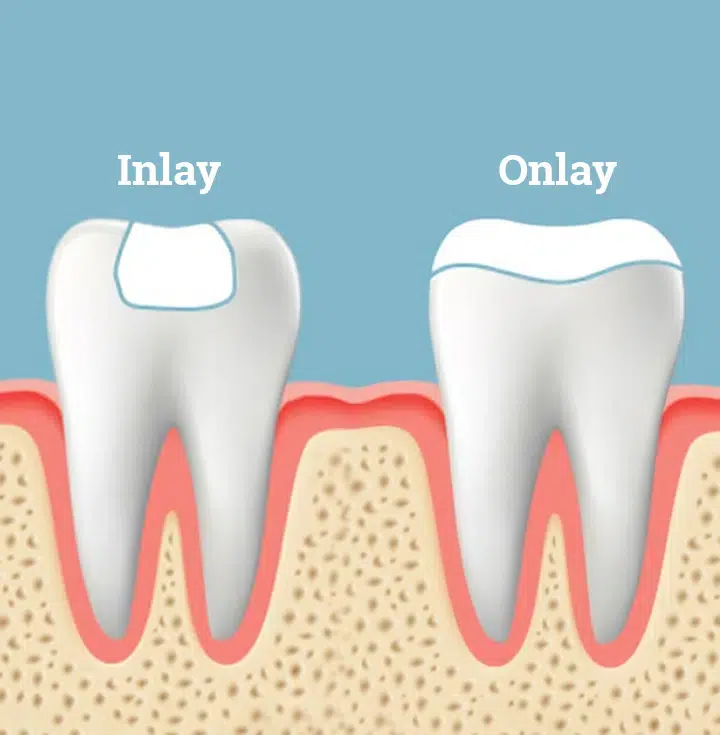
Dental Inlays And Onlays In Metairie, LA
Dental inlays and onlays serve to restore a tooth when more than half of its biting surface is compromised. Unlike traditional fillings, which may weaken a natural tooth by up to 50 percent, these alternatives can actually strengthen the tooth by up to 75 percent.
Available in various materials, dental inlays and onlays are bonded to damaged teeth, fostering a stronger and healthier surface. Utilizing special high-strength resins, they are directly bonded onto the teeth, further enhancing tooth strength. Consequently, they boast impressive longevity, lasting between ten to 30 years. Particularly in cases where the damage doesn't warrant a full crown, onlays emerge as a favorable alternative.
What Are Inlays And Onlays?
Inlays and onlays can be crafted from porcelain, gold, or composite resin materials and are affixed to the damaged portion of the tooth. An inlay, resembling a filling, is positioned within the cusp tips of the tooth. Conversely, an onlay offers a more extensive restoration, resembling an inlay but extending over one or more cusps of the tooth.
Historically, gold has been the preferred material for crafting inlays and onlays. However, porcelain has gained popularity in recent years owing to its strength and ability to match the natural color of teeth.
How Are Dental Inlays And Onlays Applied?
The process of placing inlays and onlays typically involves two appointments. During the initial visit, any existing filling is replaced, or the damaged or decayed portion of the tooth is removed, and the tooth is prepared for the inlay or onlay. To ensure a precise fit and alignment, the dentist takes an impression of the tooth, which is then sent to a dental lab for fabrication. Meanwhile, a temporary sealant is applied to the tooth, and the next appointment is scheduled.
During the second appointment, the temporary sealant is removed, and the dentist verifies the fit and alignment of the inlay or onlay. If deemed satisfactory, the inlay or onlay is securely bonded to the tooth using a durable resin and polished to achieve a smooth finish.
When Should I Consider A Dental Inlay Or Onlay?
A dental inlay is used to fill grooves in the tooth to restore or repair a tooth after it sustains harm from injury or decay that goes on to affect the cusp of the tooth. Dental inlays are more durable than regular dental fillings made from composite or amalgam, and gold inlays are the most durable.
A dental onlay is used to repair a tooth that has more extensive damage affecting the cusp, tips, or biting surface of the tooth. Onlays require a temporary solution while the final onlay is sent to a laboratory to be formed correctly.



